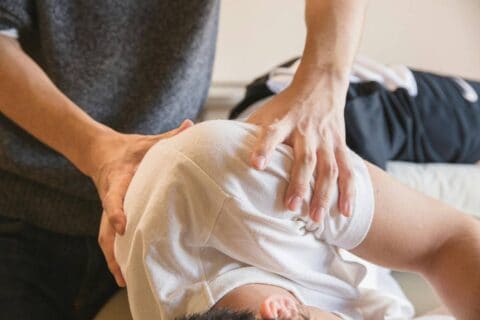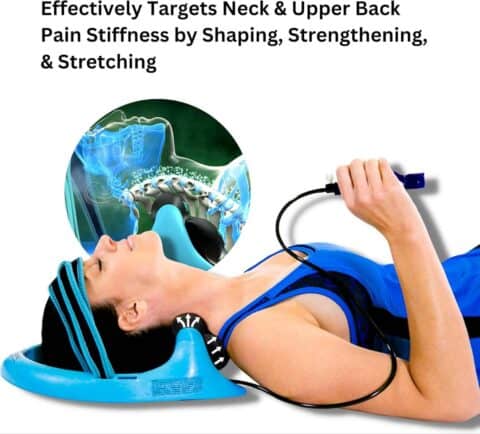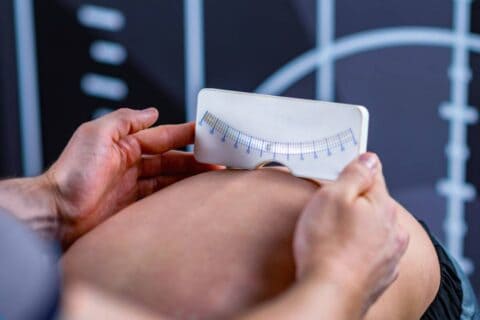As a chiropractor, I often see patients who are confused about the various terms used to describe Disc Syndrome/spinal disc conditions. It’s essential to understand the differences between disc herniation, bulge, and sequestration to ensure proper diagnosis and treatment. In this article, I’ll break down these conditions in an easy-to-understand way so that you can be better informed about your spinal health. We’ll explore the anatomy of the spinal disc, the unique characteristics of each condition, and the available treatment options. By the end of this article, you’ll have a clearer understanding of these common disc problems and how they can be effectively managed.
Key Takeaways
- Disc herniation, bulge, and sequestration are distinct conditions affecting the spinal discs, each with its own characteristics and symptoms.
- Early diagnosis and appropriate treatment are crucial for managing disc-related issues and preventing further complications.
- Lifestyle modifications, such as maintaining a healthy weight, practicing good posture, and engaging in regular exercise, can help prevent and manage disc problems.
Table of Contents
- Anatomy of the Spinal Disc
- Disc Herniation
- Disc Bulge
- Disc Sequestration
- Differential Diagnosis
- Rehabilitation Therapy
- Diagnosis and Treatment of Disc Disease
- Exploring the Causes and Symptoms of Degenerative Disc Disease
- Nerve Pain
- Prevention and Lifestyle Modifications
- FAQs
- Conclusion
Anatomy of the Spinal Disc
To understand disc conditions, it’s crucial to know the basic anatomy of a spinal disc. Picture a jelly donut – the outer part is tough and fibrous, while the inside is soft and gel-like. In medical terms, we call the outer part the annulus fibrosus and the inner part the nucleus pulposus. These discs sit between the vertebrae, acting as shock absorbers and allowing your spine to move flexibly.
As we age, our spinal discs naturally undergo some wear and tear1. This process can make the discs more susceptible to damage and lead to various conditions. However, by maintaining a healthy lifestyle and taking care of our spines, we can minimize the risk of developing disc problems or at best have our spines age with grace. This is a very basic understanding of spinal disc anatomy for the purposes of learning, but let’s explore the specific conditions that can affect these important structures.
Is SpineMed Your Path to a Pain-Free Life?
Tired of living with back pain? Take our quick quiz to see if you’re a candidate for the breakthrough SpineMed Treatment. It only takes a few minutes to potentially change your life.
Disc Herniation
A disc herniation occurs2 when the soft, gel-like material inside the disc (nucleus pulposus) pushes through a tear in the outer layer (annulus fibrosus). This can cause the disc to bulge or even rupture, putting pressure on the nearby nerves. Imagine squeezing that jelly donut too hard, and some of the filling oozes out – that’s essentially what happens in a herniated disc.
Several factors can contribute to the development of a disc herniation:
- Age-related wear and tear
- Sudden twisting or lifting motions
- Obesity
- Genetics
- Big traumas or micro repetitive stress traumas
- Bad body mechanics like posture and walking
Common symptoms of a herniated disc include:
- Local dull pain in the affected area (usually neck or lower back)
- Sharp local stabbing pain
- Referring to numbness or tingling in the arms or legs
- Weakness in the affected innervated muscles
- Instability like something is going to flare up
- In severe cases, loss of bladder or bowel control (cauda equina syndrome)
To diagnose a herniated disc, your healthcare provider may use imaging tests such as an MRI (most common) or CT scan. In some cases, an EMG (electromyography) or NCV (nerve conduction velocity) may be performed to assess nerve function.
A variety of possible conservative treatment options for a herniated disc depending on the practitioner and on the severity of the condition may include:
- Rest and activity modification
- Ice and heat therapy (depending on the provider)
- Physical therapy and rehab exercises
- Chiropractic adjustments and myofascial techniques
- Spinal Decompression
- Acupuncture or massage therapy
- Pain medications or muscle relaxants
- Steroid Injections
- In severe cases, surgery may be necessary
With proper treatment and care, most people with a herniated disc can find relief from their symptoms and return to their normal activities. Recovery time varies, but most patients see improvement within six weeks to a few months. Remember, early diagnosis and treatment plans are key to preventing further complications and achieving the best possible outcome.
Disc Bulge
A disc bulge is often confused with a herniated disc3, but there are some key differences. In a bulging disc, the outer layer (annulus fibrosus) remains intact, but the disc protrudes beyond its normal boundaries. Think of it like a hamburger patty that’s a bit too big for the bun – it’s not torn, but it’s pushing out on the sides.
Disc bulges are more common than herniations and often develop gradually over time due to:
- Age-related degeneration
- Poor posture
- Repetitive strain or overuse
- Weakened core muscles
Symptoms of a bulging disc may include:
- Localized pain in the affected area
- Stiffness or reduced mobility
- Muscle spasms
- Radiating pain or numbness (if the bulge is pressing on a nerve)
To diagnose a bulging disc, your healthcare provider will typically start with a physical exam and may order imaging tests like an MRI or CT scan. Treatment options are similar to those for a herniated disc:
- Rest and activity modification
- Ice and heat therapy
- Physical therapy and exercises
- Chiropractic adjustments
- Pain medications or anti-inflammatories
In most cases, a bulging disc can be effectively managed with conservative treatments. However, if left untreated, a bulging disc may progress to a herniation or cause other complications. That’s why it’s essential to address any symptoms early on and work with your healthcare provider to develop an appropriate treatment plan. In essence, the different names of a disc syndrome is basically a different grade on how bad the disc is sticking out from its center core.
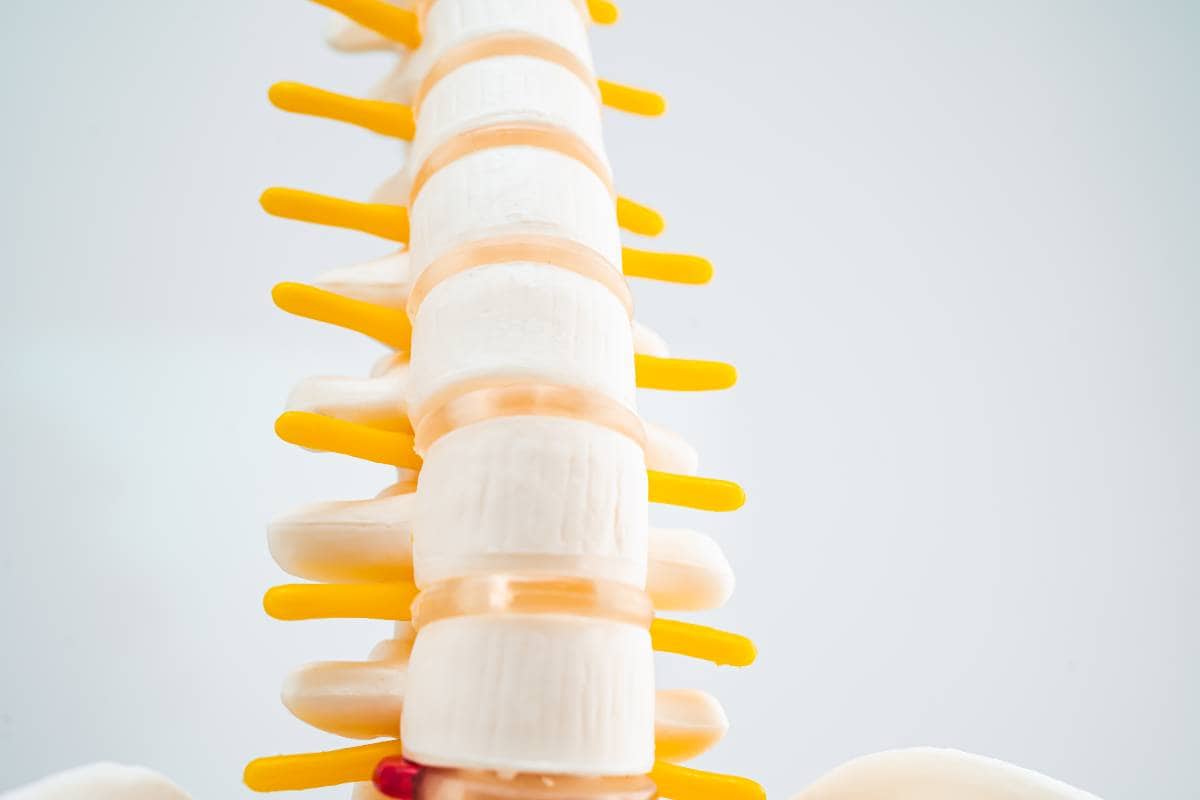
Disc Sequestration
Now, let’s talk about the most severe type of disc problem – disc sequestration4. In this condition, a piece of the disc material completely separates from the main disc and becomes a free fragment within the spinal canal. It’s like a piece of that jelly donut breaking off and floating around where it doesn’t belong.
Disc sequestration is often the result of:
- Severe disc degeneration
- Trauma or injury to the spine
- Extreme strain or overload
Symptoms of a sequestered disc can be more severe than those of a herniation or bulge:
- Intense, debilitating pain
- Significant numbness or weakness in the affected limbs
- In rare cases, cauda equina syndrome (loss of bladder or bowel control)
Due to the severity of the condition, diagnosis of a sequestered disc usually involves advanced imaging like an MRI or CT myelogram. Treatment options may include:
- Urgent surgical intervention to remove the free fragment
- Aggressive pain management
- Physical therapy and rehabilitation
Disc sequestration is a serious condition that requires prompt medical attention. If you experience sudden, severe symptoms or signs of cauda equina syndrome, seek emergency care immediately. With timely intervention and appropriate treatment, patients with a sequestered disc can often achieve a successful recovery and return to their normal activities.
Differential Diagnosis
It’s important to note that other conditions can mimic the symptoms of disc problems. These may include:
- Spinal stenosis
- Facet joint arthritis
- S.I Joint Inflammation
- Muscle strains or sprains
- Spinal tumors or infections
That’s why an accurate diagnosis is crucial for determining the most appropriate treatment plan. Your healthcare provider will consider your medical history, perform a physical exam, and may order additional tests to rule out other potential causes of your symptoms.
Rehabilitation Therapy
Rehabilitation Exercise plays a crucial role in the recovery process for patients with disc problems. The goals of these interventions are to:
- Reduce pain and modulate inflammation
- Improve flexibility and range of motion
- Strengthen the muscles that support the spine
- Correct posture and biomechanics
- Prevent future injuries
A typical rehabilitation program may include:
- Stretching and flexibility exercises
- Core strengthening and stabilization exercises
- Low-impact aerobic conditioning
- Manual therapies like massage or mobilization
- Modalities like heat, or electrical stimulation
Diagnosis and Treatment of Disc Disease
How is Disc Syndrome Diagnosed?
So, you’re wondering how disc disease is diagnosed and treated, right?
Well, first things first, your healthcare provider will likely start with a physical exam and ask about your symptoms. They may also order some imaging tests, like an MRI or CT scan, to get a better look at what’s going on inside your spine. The history taking portion of the examination gets the Doctor 80% of the diagnosis even before ordering special imaging. We know answering a million questions before your appointment is frustrating but it helps us get to your proper diagnosis. Would you rather have a quick appointment or proper diagnosis and a treatment plan to your condition?
What are Some of The Medical Treatment Options for Disc Disease?
Now, when it comes to treatment options, there are quite a few depending on how severe your condition is. For milder cases, your medical provider may recommend things like rest, ice or heat therapy, and over-the-counter pain meds. Physical therapy and exercises can also be super helpful in strengthening the muscles around your spine and improving flexibility.
If your symptoms are more severe or not improving with conservative treatments, your provider may suggest more advanced options like spinal injections or even surgery in some cases.
Which Chiropractor Can Manage Disc Disease?
So, where does a chiropractor fit into all of this? Well, it all depends on the chiropractor you talk to. There are a variety of different chiropractic techniques and philosophies out there but our clinic focuses on a sports medicine approach. That means we try to find our answers through evidence-based scientific journals. We feel that this approach creates a common sense and logical way of thinking when treating medical conditions.
So as a logical approach, we feel that the best tactic for a “disc” issue is spinal decompression. If something is compressed then the logical answer is to decompress. And we just have the decompression table to do it. Our specific “Spine-Med” model has a gentle and precise way of slowly expanding the spine. In fact, the machine is so quiet that our patients don’t think the machine is turned on. The reason for that is that the spine has sensors that detect to much motion and when detected it will spasm the paraspinal muscles.
We would also incorporate other therapies like spinal adjustments, class IV laser therapy, manual muscular therapies, and exercises to help reduce pain, improve mobility, and promote healing. Plus, we can offer lifestyle advice to help you prevent further damage and keep your spine healthy in the long run.
The key is to work closely with whomever you use and find the right combination of treatments that work best for you and your specific condition. Don’t be afraid to ask questions and advocate for your health – that’s what your providers are there for!
Exploring the Causes and Symptoms of Degenerative Disc Disease
What Causes Degenerative Disc Disease?
As we age, our spinal discs naturally start to wear down (dehydrate) and lose some of their elasticity and shock-absorbing capabilities. This process is called disc degeneration, and it’s a normal part of getting older.
But, certain factors can speed up this process or make it more severe, like:
- Genetics (arthritis)
- Obesity (carrying extra weight puts more stress on your spine)
- Smoking (it decreases blood flow to your discs, which can cause them to deteriorate faster)
- Repetitive heavy lifting or twisting motions (like if you have a physically demanding job)
How Does Disc Degeneration Lead to Pain?
Well, as the discs break down, they can start to bulge or herniate, which means they’re pushing out of their normal space. This can put pressure on the nerves around your spine, leading to pain, numbness, or weakness in your back, legs, or arms. Or the disc itself can be a pain generator if the fibers get torn to much.
What Are the Common Symptoms of Degenerative Disc Disease?
Some common symptoms of degenerative disc disease include:
- Chronic lower back pain that comes and goes
- Pain that gets worse when sitting, bending, or lifting
- Pain that radiates down your buttocks and legs (sciatica)
- Numbness or tingling in your arms or legs
- Muscle weakness or spasms
- Antalgic leans (body leaning away from pain)
- Pain with coughing or sneezing
Keep in mind, though, that not everyone with disc degeneration experiences pain or symptoms. It really varies from person to person.
Nerve Pain
How Does a Herniated Disc Affect the Nerves?
Now, here’s where things can get a bit uncomfortable. Your spine is like a superhighway for nerves, with the spinal cord and nerve roots running through the center. When a disc herniates, it can start to press on these nerves, leading to some not-so-fun symptoms like:
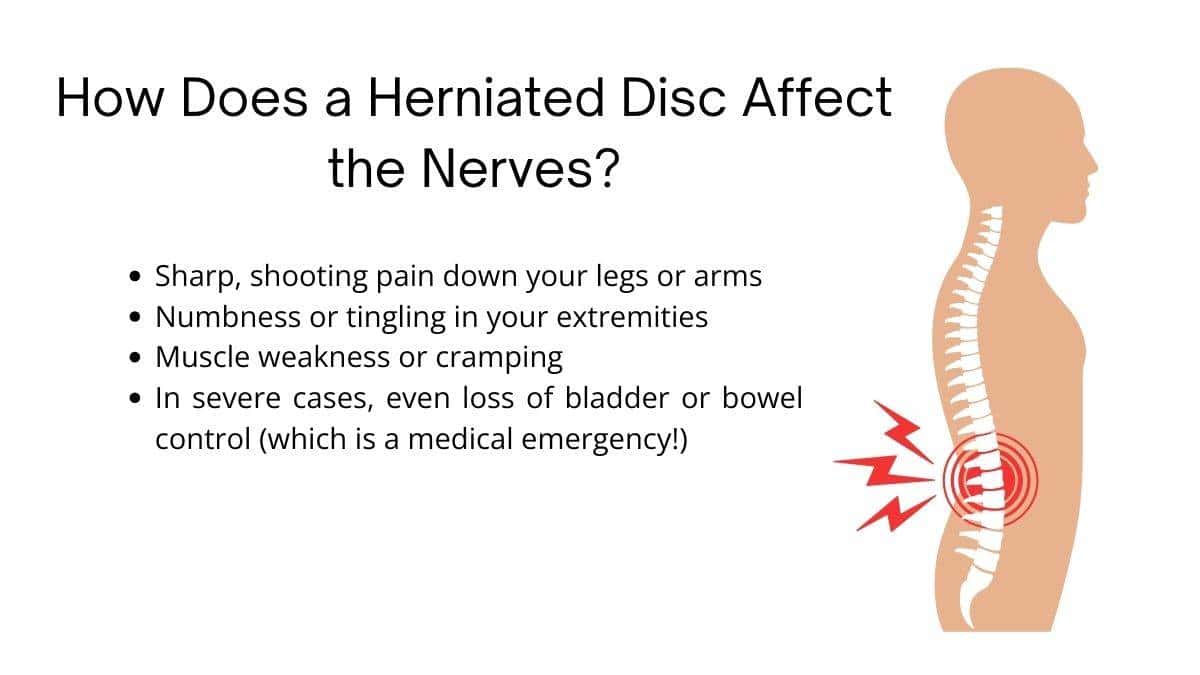
Basically, a herniated disc can cause some major traffic jams in your nervous system, disrupting the normal flow of signals between your brain and body.
Prevention and Lifestyle Modifications
Prevention and Lifestyle Modifications Preventing disc problems starts with making smart lifestyle choices. Here are some tips for maintaining a healthy spine:
- Maintain a healthy weight to reduce excess stress on your discs
- Practice good posture when sitting, standing, and lifting
- Engage in regular exercise to strengthen your core and back muscles
- Stretch regularly to maintain flexibility and reduce muscle tension
- Avoid smoking and excessive alcohol consumption, as these can contribute to disc degeneration
- Visit a chiropractor for regular check-ups and adjustments. Chiropractors are experts in spinal health and can help identify and correct any issues before they become more serious problems. They can also provide guidance on proper posture, exercise, and other lifestyle factors that can impact your spinal health.
Remember, a healthy spine is key to overall health and well-being, so make it a priority to take care of your back.
Is SpineMed Your Path to a Pain-Free Life?
Tired of living with back pain? Take our quick quiz to see if you’re a candidate for the breakthrough SpineMed Treatment. It only takes a few minutes to potentially change your life.
FAQs
What is degenerative disc disease?
How is degenerative disc disease diagnosed?
What are the symptoms of degenerative disc disease?
What causes degenerative disc disease?
How can a Chiropractor help with degenerative disc disease get treated?
Conclusion
Understanding the differences between disc herniation, bulge, and sequestration is essential for anyone looking to maintain optimal spinal health. By learning about the unique characteristics and treatment options for each condition, you can be better prepared to recognize symptoms and seek appropriate care when necessary.
Remember, early intervention and a proactive approach to spinal health are key to preventing and managing disc problems. If you’re experiencing any concerning symptoms or want to learn more about how to keep your spine healthy, don’t hesitate to consult with a qualified healthcare professional like myself. Together, we can develop a personalized plan to help you achieve your goals and enjoy a pain-free, active lifestyle.
If you’re concerned about your spinal health or experiencing any symptoms related to disc problems, don’t wait – As a chiropractor, I’m dedicated to helping my patients achieve optimal health and wellness through personalized, evidence-based care, including the revolutionary SpineMED decompression protocol.
This cutting-edge treatment has helped countless patients find relief from herniated discs and other spinal conditions. Together, we can develop a treatment plan that addresses your unique needs and goals, incorporating SpineMED and other proven techniques to set you on the path to a pain-free, active lifestyle. Take the first step towards better spinal health today!
- https://my.clevelandclinic.org/health/diseases/16912-degenerative-disk-disease#:~:text=Degenerative%20disk%20disease%20is%20when,a%20normal%20part%20of%20aging. ↩︎
- https://www.umms.org/ummc/health-services/orthopedics/services/spine/patient-guides/lumbar-herniated-disc ↩︎
- https://miamineurosciencecenter.com/en/conditions/herniated-disc/ ↩︎
- https://radiopaedia.org/articles/disc-sequestration?lang=us ↩︎
Blog Disclaimer: The information provided on The BodyFix Chiro blog is for general informational and educational purposes only and is not intended as medical advice. These articles reflect our opinions and experiences but should not be used to diagnose or treat any health conditions. Always consult with your physician, chiropractor, or other qualified healthcare provider before starting any new treatment, exercise program, or making changes to your health routine. Any actions you take based on information from this blog are entirely at your own risk, and The BodyFix Chiro and its contributors disclaim any liability for the decisions you make based on this information.


